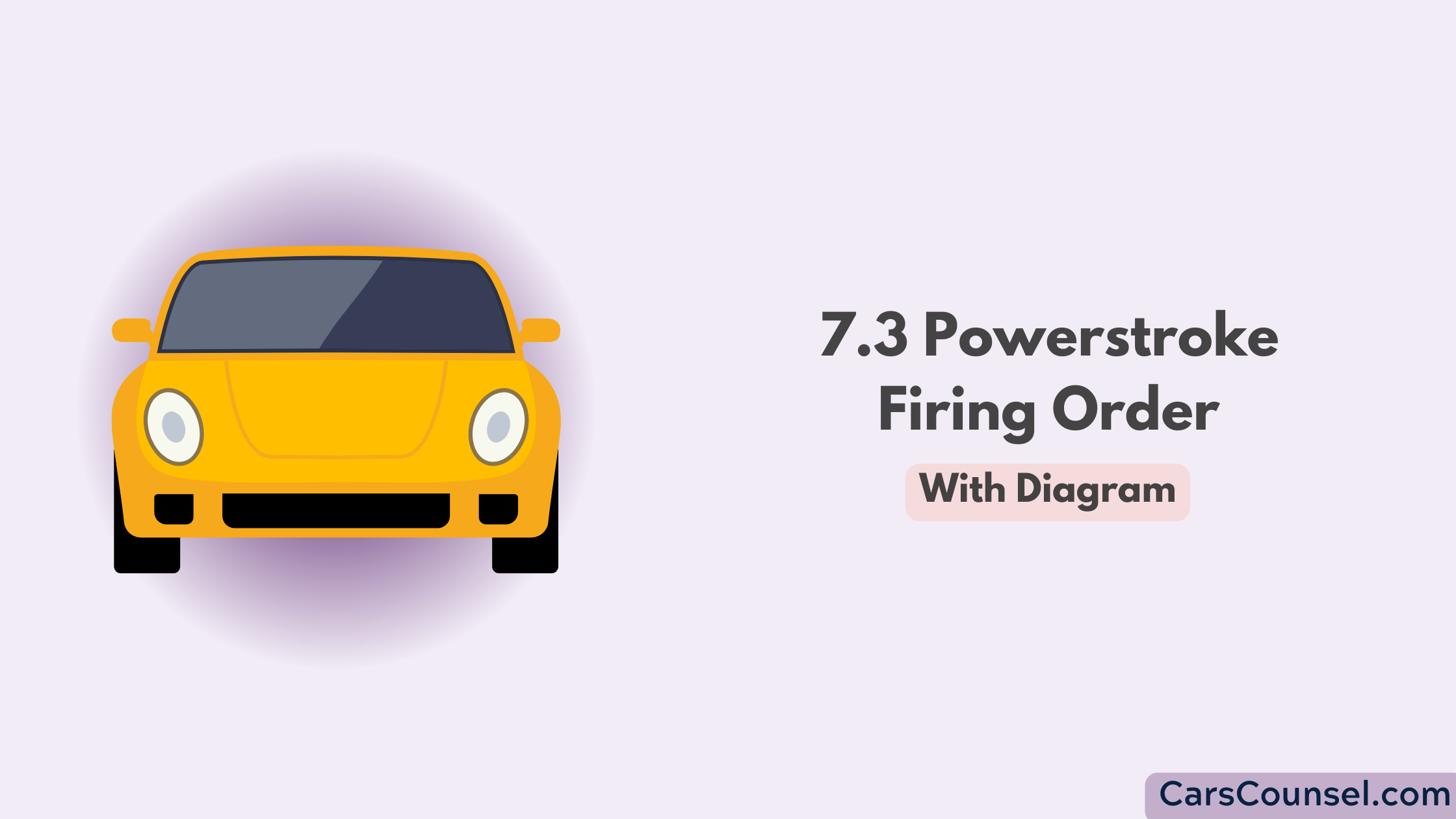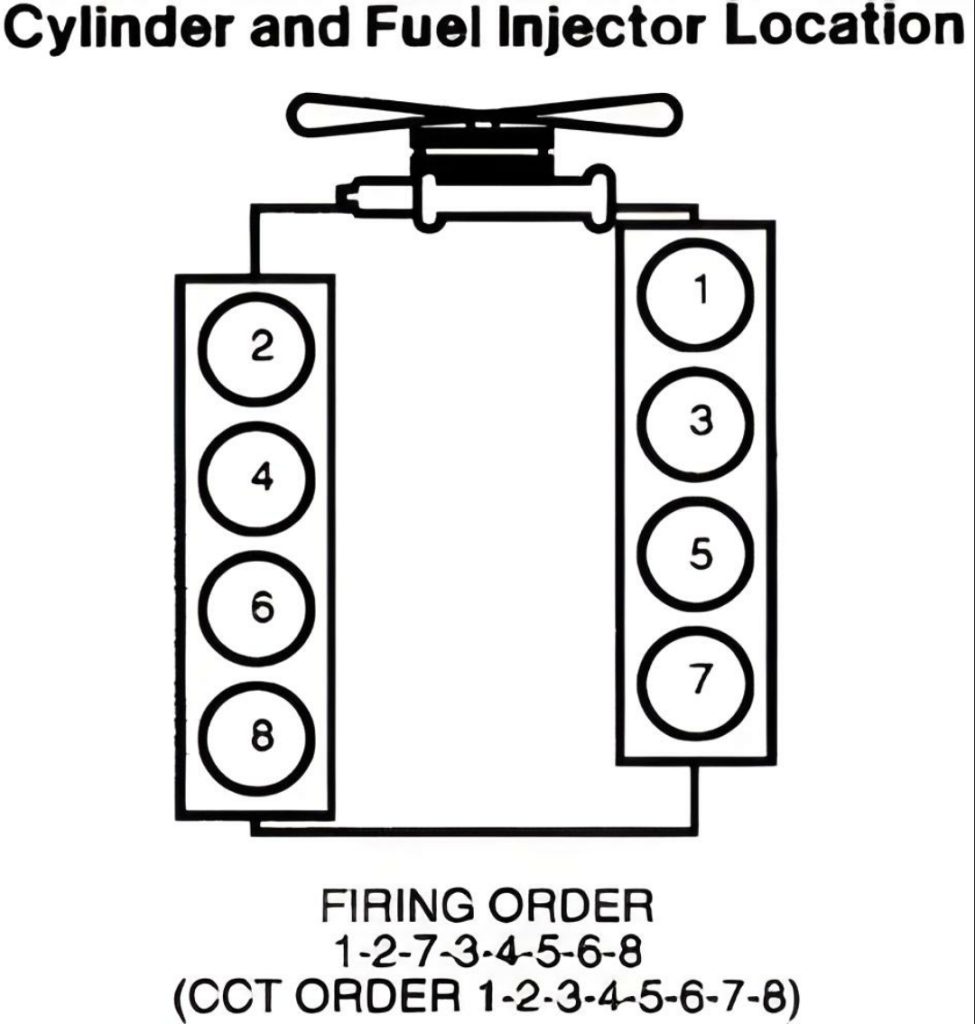The firing order for your 7.3 Powerstroke engine is 1-2-7-3-4-5-6-8, and it’s a key factor in achieving peak performance and improved engine efficiency. This specific sequence directly impacts the balance and vibration of the engine, aiding in troubleshooting and preventing mechanical failures.

Take note of the Injector number 8; it’s unique and notorious for causing misfires, due to a different design and purpose. Ensuring your injectors are well-maintained, and the sensors are working perfectly will help prevent misfires. Beyond this, there’s a wealth of other valuable info to uncover about your 7.3 Powerstroke.
Quick Navigation
Key Takeaways
- The 7.3 Powerstroke Firing Order follows a specific sequence: 1-2-7-3-4-5-6-8.
- This firing order is essential for enhancing performance and improving engine efficiency.
- It is applicable to various vehicles and serves as a valuable troubleshooting aid.
- The unique Number 8 Injector in the sequence is notorious for causing misfires and has a different design.
- A diagram of the 7.3 Powerstroke Firing Order can help visualize the sequence and aid in troubleshooting.
Understanding 7.3 Powerstroke Firing Order

To truly grasp the 7.3 Powerstroke firing order, you’ll need to recognize that it refers to the specific sequence in which the cylinders are ignited. This isn’t just essential; there’s a precise pattern: 1-2-7-3-4-5-6-8.
Each number corresponds to a specific cylinder in your engine. Knowing this order is vital for troubleshooting issues and enhancing your 7.3 Powerstroke performance. If you’re experiencing misfires or rough idling, the problem could lie in the firing sequence. With this knowledge, you can also target your maintenance and upgrades more effectively.
Firing Order Applications
Understanding the firing order isn’t just crucial for your 7.3 Powerstroke; it’s also applicable to other vehicles like the Ford 6.9, Chevrolet 6.2 liter, and GMC trucks. The correct firing order can significantly enhance your diesel engine efficiency, with each cylinder firing at the ideal moment.
Let’s explore the ignition sequence importance:
- Smooth Operation: Accurate firing order guarantees your engine runs smoothly without misfires or vibrations.
- Fuel Efficiency: The right sequence guarantees efficient combustion, improving your vehicle’s fuel efficiency.
- Engine Life: An incorrect firing sequence can stress your engine and shorten its lifespan.
Torque Specifications Breakdown
Now that you’re familiar with the importance of the firing order for your engine’s performance, let’s break down the torque specifications for the 7.3 Powerstroke.
The complexities of the firing order are integral to the engine’s performance, but so too are the torque specifications. The significance of these specifications can’t be underestimated. They guarantee the appropriate degree of force is applied to your engine’s components, preventing mechanical failures.
For instance, the 3/8′ outer main cap bolt requires a torque of 35 ft-lbs, while the 7/16′ inner main cap bolt demands a torque of 75 ft-lbs. Likewise, the connecting rod bolts need specific torque—38-44 ft-lbs for the 11/32′ bolt and 40-45 ft-lbs for the 3/8′ bolt. Understanding and applying these precise torque specifications are crucial to your Powerstroke’s best performance.
The Unique Number 8 Injector
Delving into the distinctive aspect of the 7.3 Powerstroke, you’ll find that the number 8 injector has a particular story of its own. Unlike the other seven, Injector 8 has a different design and purpose due to initial design flaws.
- Injector 8 was notorious for causing a ‘cackle’ or misfire, leading to numerous injector troubleshooting, Powerstroke specific.
- Being the farthest from the oil pump, it received less oil, causing delayed firing and subsequent misfire.
- Ford issued a revised Injector 8 to rectify this, leading to countless injector replacement, Powerstroke primarily.
This specific injector 8, uniquely crafted, has become a talking point among Powerstroke enthusiasts. Understanding its peculiarities not only enriches your knowledge but also aids in troubleshooting your Powerstroke engine effectively.
Causes for 7.3 Powerstroke Misfires
While the unique design of the number 8 injector is one potential cause of misfires in a 7.3 Powerstroke, there are several other factors that can contribute to this issue. A common misfire can also occur due to worn-out injectors or faulty sensors.
It’s crucial to perform diagnostic techniques accurately to pinpoint the exact cause. Fuel delivery problems, such as low fuel pressure, can cause misfires too. Low compression, possibly due to a damaged piston or cylinder, can also lead to this issue. Additionally, incorrect spark plug gap or a failing ignition coil could be the culprits.
Comparing 7.3 IDI and 7.3 Powerstroke
In comparing the 7.3 IDI and the 7.3 Powerstroke, you’ll find that although both engines share similarities, they markedly differ in their control mechanisms. Specifically, the Powerstroke uses a computer-controlled system, while the IDI relies on a mechanical one.
- Performance Comparison: The Powerstroke tends to offer more horsepower and torque, due to its advanced, computerized system. This gives you a more robust driving experience.
- Fuel Efficiency Differences: You’ll find that the Powerstroke typically boasts better fuel efficiency, thanks to its precision engine control.
- Control Mechanism Contrast: The Powerstroke’s computerized system allows for more precise control over engine functions, which can lead to a smoother ride and less wear and tear.
Unraveling the 7.3 Diesel IDI
Having understood the key differences between the 7.3 IDI and the 7.3 Powerstroke, let’s now shift our focus to the intricacies of the 7.3 Diesel IDI engine.
This diesel engine is hailed for its robustness and reliability. Unlike its Powerstroke counterpart, it employs mechanical injection systems, which, while less efficient, are considered more durable and easier to maintain.
The IDI, which stands for Indirect Injection, signifies the method of fuel delivery in this engine. Fuel is first injected into a pre-combustion chamber before entering the cylinder. This mechanism, although less powerful, provides smoother, quieter operation and improved emissions.
Understanding these details about the 7.3 Diesel IDI helps you make an informed decision regarding your diesel engine.
About the Author: Jake Mayock
You’re about to delve into the fascinating world of Jake Mayock, a seasoned journalist, professor, and book editor who specializes in analyzing intricate automotive topics for readers like you. Jake’s expertise, spanning over two decades, is deeply rooted in automotive journalism insights, making him a reliable source for all your car-related queries.
- Jake’s profound understanding of complex automotive topics, including the firing order of the 7.3 Powerstroke, distinguishes him in the industry.
- His capacity to distill convoluted details into digestible information exhibits his exceptional teaching skills.
- His editorial skills are evident in his numerous published books, as they meticulously dissect automotive intricacies.
Jake’s insightful automotive journalism has turned many curious readers into knowledgeable car enthusiasts. His contributions are indeed invaluable to the industry.
Conclusion
So, you’ve explored the intricate world of 7.3 Powerstroke firing order. You’ve learned the importance of correct firing order, delved into torque specifications, and discovered the unique issues of the number 8 injector.
You’ve even compared the 7.3 IDI and Powerstroke. But remember, this is just the tip of the mechanical iceberg. There’s much more to learn and understand.
So, keep exploring, keep questioning, and most importantly, keep your engine running smoothly.

